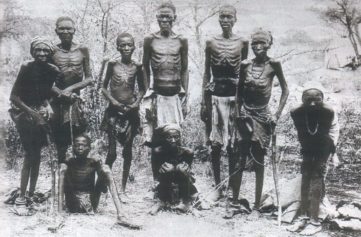Researchers have started to unveil the genetic heritage of Ethiopian populations, who are among the most diverse in the world, and lie at the gateway from Africa. They found that the genomes of some Ethiopian populations bear striking similarities to those of populations in Israel and Syria, a potential genetic legacy of the Queen of Sheba and her companions.
The team detected mixing between some Ethiopians and non-African populations dating to approximately 3,000 years ago. The origin and date of this genomic admixture, along with previous linguistic studies, is consistent with the legend of the Queen of Sheba, who according to the Ethiopian Kebra Nagast book had a child with King Solomon from Israel and is mentioned in both the Bible and the Qur’an.
Ethiopia is situated in the horn of Africa, and has often been regarded as one of the gateways from Africa to the rest of the world. The Ethiopian region itself has the longest fossil record of human history anywhere in the world. Studying population genetics within this diverse region could help us to understand the origin of the first humans.
“From their geographic location, it is logical to think that migration out of Africa 60,000 years ago began in either Ethiopia or Egypt. Little was previously known about the populations inhabiting the North-East African region from a genomic perspective. This is the first genome study on a representative panel of Ethiopian populations,” explains Luca Pagani, first author from the Wellcome Trust Sanger Institute and the University of Cambridge. “We wanted to compare the genome of Ethiopians with other Africans to provide an essential piece to the African – and world – genetic jigsaw.”
They found that the Ethiopian genome is not as ancient as was previously thought and less ancient than the genomes of some Southern African populations. There were also links with other populations.
“We found that some Ethiopians have 40-50% of their genome closer to the genomes of populations outside of Africa, while the remaining half of their genome is closer to populations within the African continent,” says Dr Toomas Kivisild, co-author from the University of Cambridge. “We calculated genetic distances and found that these non-African regions of the genome are closest to populations in Egypt, Israel and Syria, rather than to the neighbouring Yemeni and Arabs”.
The team found that these two groups of African and non-African people mixed approximately 3,000 years ago, well before the historically-documented Islamic expansions and the colonial period of the last centuries.
An earlier study found that Ethio-Semitic, an Ethiopian language belonging to a linguistic family primarily spoken in the Middle East, split from the main Semitic group 3,000 years ago, around the same time as the non-African genomic component arrived in Ethiopia. All this evidence combined fits the time and locations of the legend of the Queen of Sheba, which describes the encounter of the Ethiopian Queen and King Solomon.
“None of this research would have been possible without the superb fieldwork of our Ethiopian colleagues Professor Endashaw Bekele and Dr Ayele Tarekegn over many years. The outstanding genetic diversity present within the peoples of Ethiopia is a rich resource that will contribute greatly, both to our understanding of human evolution and the development of personalised medicine.” says Dr Neil Bradman, co-lead author from UCL (University College London). “The Ethiopian Government has a practice of encouraging genetic research, a policy that bodes well for the future”.
“Our research gives insights into important evolutionary questions,” says Dr Chris Tyler-Smith, co-lead author from the Wellcome Trust Sanger Institute. “We see imprints of historical events on top of much more ancient prehistoric ones that together create a region of rich culture and genetic diversity.
The next step for our research has to be to sequence the entire genomes, rather than read individual letters, of both Ethiopian people and others to really understand human origins and the out-of-Africa migration.”
Source: All Africa


